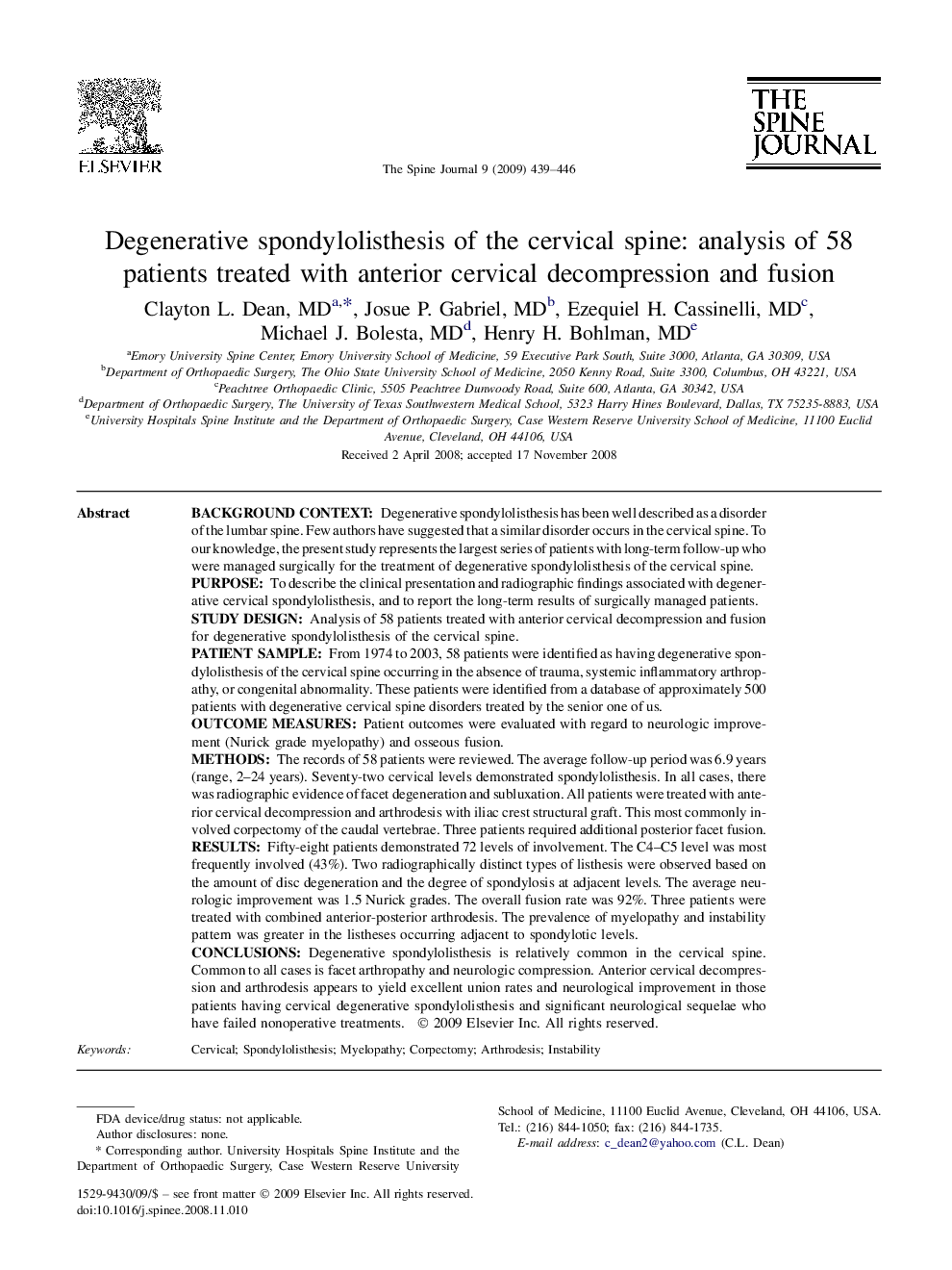| Article ID | Journal | Published Year | Pages | File Type |
|---|---|---|---|---|
| 4099648 | The Spine Journal | 2009 | 8 Pages |
Background contextDegenerative spondylolisthesis has been well described as a disorder of the lumbar spine. Few authors have suggested that a similar disorder occurs in the cervical spine. To our knowledge, the present study represents the largest series of patients with long-term follow-up who were managed surgically for the treatment of degenerative spondylolisthesis of the cervical spine.PurposeTo describe the clinical presentation and radiographic findings associated with degenerative cervical spondylolisthesis, and to report the long-term results of surgically managed patients.Study designAnalysis of 58 patients treated with anterior cervical decompression and fusion for degenerative spondylolisthesis of the cervical spine.Patient sampleFrom 1974 to 2003, 58 patients were identified as having degenerative spondylolisthesis of the cervical spine occurring in the absence of trauma, systemic inflammatory arthropathy, or congenital abnormality. These patients were identified from a database of approximately 500 patients with degenerative cervical spine disorders treated by the senior one of us.Outcome measuresPatient outcomes were evaluated with regard to neurologic improvement (Nurick grade myelopathy) and osseous fusion.MethodsThe records of 58 patients were reviewed. The average follow-up period was 6.9 years (range, 2–24 years). Seventy-two cervical levels demonstrated spondylolisthesis. In all cases, there was radiographic evidence of facet degeneration and subluxation. All patients were treated with anterior cervical decompression and arthrodesis with iliac crest structural graft. This most commonly involved corpectomy of the caudal vertebrae. Three patients required additional posterior facet fusion.ResultsFifty-eight patients demonstrated 72 levels of involvement. The C4–C5 level was most frequently involved (43%). Two radiographically distinct types of listhesis were observed based on the amount of disc degeneration and the degree of spondylosis at adjacent levels. The average neurologic improvement was 1.5 Nurick grades. The overall fusion rate was 92%. Three patients were treated with combined anterior-posterior arthrodesis. The prevalence of myelopathy and instability pattern was greater in the listheses occurring adjacent to spondylotic levels.ConclusionsDegenerative spondylolisthesis is relatively common in the cervical spine. Common to all cases is facet arthropathy and neurologic compression. Anterior cervical decompression and arthrodesis appears to yield excellent union rates and neurological improvement in those patients having cervical degenerative spondylolisthesis and significant neurological sequelae who have failed nonoperative treatments.
